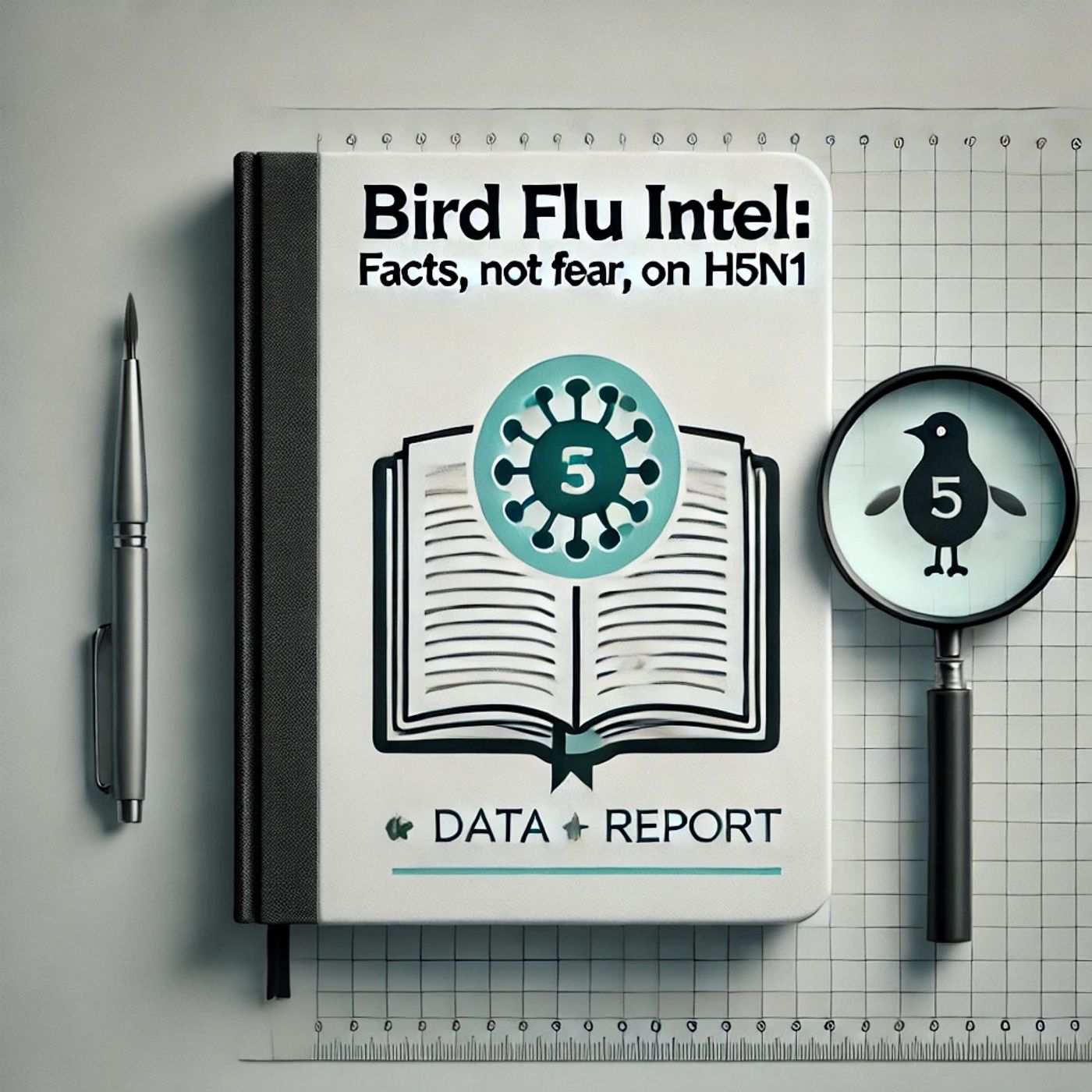Podcast Episode Details
Back to Podcast Episodes
H5N1 Bird Flu Facts Revealed: Low Human Risk, No Person to Person Spread, Safe Food Practices Explained
Bird Flu Intel: Facts, Not Fear, on H5N1
Welcome to Bird Flu Intel, the podcast dedicated to delivering clear, evidence-based facts about H5N1 bird flu, cutting through the noise and dispelling rumors. Today, we’re busting some of the biggest myths circulating about avian influenza and giving you the critical tools you need for staying informed.
Let’s start with myth number one: “H5N1 bird flu is highly contagious between people.” This is false. According to the CDC and the American Medical Association, there is currently no evidence of person-to-person spread of H5N1 in the United States or globally. Nearly all human infections have been traced to direct contact with infected birds, poultry, or in some U.S. cases, dairy cows. The overall risk to the general public remains low.
Myth two: “Bird flu always causes severe illness or death in people.” This is incorrect. Most documented human cases in the U.S. have resulted in mild symptoms such as conjunctivitis or mild respiratory illness, and nearly all have recovered. However, serious illness and death, while rare, have occurred elsewhere, mainly among people with underlying health conditions and those with close and repeated exposure to sick animals.
Next, myth number three: “Consuming poultry or dairy products can give you H5N1.” Scientific evidence and the FDA’s latest investigations show there’s no risk of contracting bird flu from eating properly cooked eggs, poultry, or pasteurized milk and dairy. Normal food safety practices—like cooking thoroughly and avoiding raw, unpasteurized products—are effective prevention measures.
A final myth: “H5N1 has already caused a pandemic or will inevitably do so.” This is not supported by current data. H5N1 viruses mutate frequently, and scientists remain vigilant for changes that could make the virus more infectious among people. However, contagious human-to-human transmission has not occurred. Experts, including those at the World Health Organization, consider the likelihood of a pandemic from current strains low, but continue to monitor for evolutionary changes.
Misinformation spreads quickly on social media and in headlines, often fueled by sensationalism, misinterpretation of scientific reports, or deliberate fearmongering. The harm is real: exaggerated risks lead to panic buying, stigma toward animal producers, or neglect of practical protection measures. Remember, the most reliable information comes from official public health sources like the CDC, USDA, FDA, and the World Health Organization. When you encounter bird flu news, ask: Is this source credible? Is the information up to date and supported by recognized public health agencies or peer-reviewed studies?
The current scientific consensus holds that H5N1 remains a major threat to poultry, wild birds, and other animals, including dairy cattle. Human cases are rare and almost always linked to direct animal exposure. Extensive surveillance is underway. The risk to the general public is low. Scientific uncertainty remains, especially concerning how mutations could affect transmission or severity, and researchers are actively investigating the virus’s behavior in new animal hosts.
Thanks for tuning in today to Bird Flu Intel, where facts, not fear, guide the conversation. Come back next week for more myth-busting, evidence-driven discussion. This has been a Quiet Please production. For more, check out QuietPlease.AI.
For more http://www.quietplease.ai
Get the best deals https://amzn.to/3ODvOta
Published on 1 week ago